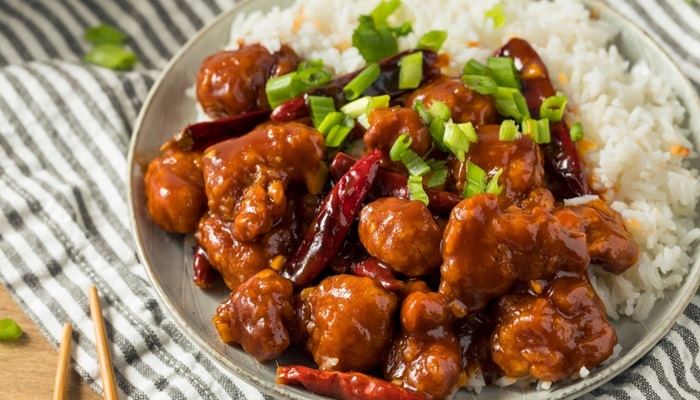Chinese chicken breast dishes are a delightful fusion of flavors and techniques that have been perfected over centuries. These recipes highlight the versatility of chicken, using it as a canvas for a variety of spices and cooking methods. Today, we invite you on a culinary journey to learn how to cook Chinese chicken breast, exploring its cultural significance and providing detailed instructions for an unforgettable dining experience.
The Cultural Significance
A Reflection of Tradition
Chicken has long held a place of honor in Chinese cuisine. It symbolizes prosperity and good fortune, often served during festivals and family gatherings. Chicken breast, being lean and versatile, is a favorite choice for healthy yet flavorful meals. Each dish tells a story of tradition and innovation, inviting diners to savor both the past and present.
Symbol of Health
In Chinese culture, eating well-balanced meals is crucial for maintaining health and harmony. Chicken breast, rich in protein and low in fat, fits perfectly into this philosophy. It’s often paired with vegetables and grains to create balanced dishes that promote well-being. This emphasis on health underscores the importance of nutritious ingredients in Chinese cooking.
Essential Ingredients
Preparing Your Kitchen
To cook authentic Chinese chicken breast, gather the following ingredients:
Chicken Breast: Boneless and skinless, cut into bite-sized pieces or strips.
Aromatics: Fresh ginger, garlic, and scallions to build flavor.
Vegetables: Bell peppers, snap peas, carrots, or bok choy for color and texture.
Condiments: Soy sauce, oyster sauce, hoisin sauce, and sesame oil for seasoning.
Spices: Five-spice powder, black pepper, and red pepper flakes for depth.
Starches: Cornstarch for coating and thickening sauces.
Oil: Vegetable oil or peanut oil for stir-frying.
Broth: Chicken broth for added flavor in sauces.
Prepping Ahead
Before starting, prepare all ingredients. Slice chicken breast into uniform pieces, chop aromatics, and measure out condiments. Having everything ready ensures a smooth cooking process and enhances the final result.
Step-by-Step Cooking Process
Marinating the Chicken
Prepare Marinade: In a bowl, mix soy sauce, oyster sauce, a bit of cornstarch, and a splash of sesame oil. Add sliced chicken breast and toss to coat evenly. Let it marinate for at least 30 minutes. This step infuses the chicken with flavor and keeps it tender.
Stir-Frying the Basics
Heat Oil: Start by heating oil in a large wok or skillet over high heat.
Sauté Aromatics: Add minced ginger and garlic. Stir until they become fragrant. This step sets the foundation for the rich flavors of the dish.
Add Chicken: Toss in the marinated chicken pieces. Stir-fry until they turn opaque and start to brown. Remove the chicken from the wok and set aside.
Cooking Vegetables
Add Vegetables: In the same wok, add chopped bell peppers, snap peas, and carrots. Stir-fry until they are just tender but still crisp. This quick cooking preserves their vibrant colors and textures.
Combining Ingredients
Return Chicken: Add the cooked chicken back into the wok. Stir to combine with the vegetables.
Season with Sauces: Pour in soy sauce, oyster sauce, and hoisin sauce. Stir well to coat everything evenly. These sauces add depth and umami to the dish.
Thicken Sauce (Optional): Mix cornstarch with water and pour it into the wok. Stir quickly to thicken the sauce. This step creates a glossy finish and helps the flavors cling to the ingredients.
Final Touches
Garnish: Drizzle with sesame oil and garnish with sliced scallions. This final touch adds fragrance and visual appeal.
Enhancing the Experience
Serving Suggestions
Serve your Chinese chicken breast hot as a main dish or part of a multi-course meal. The combination of vibrant colors and flavors makes it a perfect complement to rice, noodles, or other side dishes.
Side Dishes
Consider serving side dishes that complement the flavors of the chicken. Steamed dumplings, stir-fried vegetables, or a simple soup can enhance the dining experience. These additions provide a balance of textures and flavors, making each bite more enjoyable.
Drinks Pairing
Choose drinks that pair well with the richness of the chicken. A light tea like green tea or jasmine tea can help cleanse the palate. Herbal teas like mint or chamomile also offer a soothing contrast to the savory flavors of the dish.
Conclusion: A Culinary Masterpiece
In conclusion, cooking Chinese chicken breast is more than just preparing a meal; it’s embracing a cultural heritage and celebrating the art of cooking. By gathering the right ingredients, carefully marinating the chicken, stir-frying the basics, cooking vegetables, combining ingredients, and finishing with touches, you can create a dish that tells a story of tradition and innovation.
Each step of the process, from prepping ingredients to final touches, contributes to the final result—a flavorful and visually appealing dish that delights the senses. Serve it with care, paired with complementary sides and drinks, and you have a meal that brings people together, fostering connections and shared moments.
Through this recipe, you not only learn how to cook a delicious dish but also gain insight into the cultural significance behind it. So, gather your ingredients, roll up your sleeves, and embark on this culinary adventure. Enjoy the journey of flavors and the joy of sharing a meal with loved ones. Happy cooking!
By mastering the art of cooking Chinese chicken breast, you open a door to a world of flavors and traditions. Whether enjoyed as a main dish or part of a festive meal, this dish offers a taste of history and innovation, inviting everyone to savor the beauty of culinary heritage. Each bite reflects the principles of simplicity, balance, and harmony that define Chinese cuisine, reminding us of the joys of cooking and sharing food with others.
Related topics:


